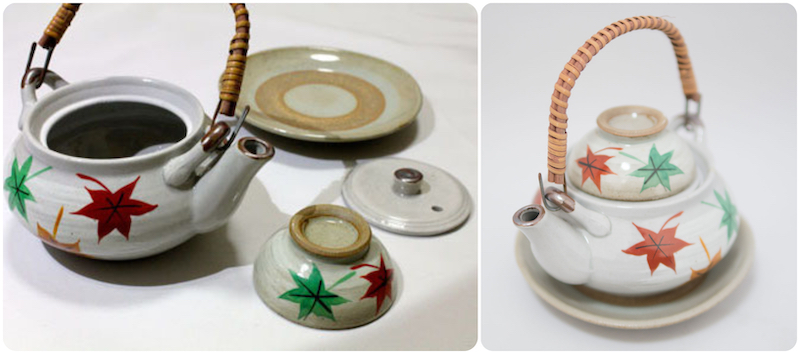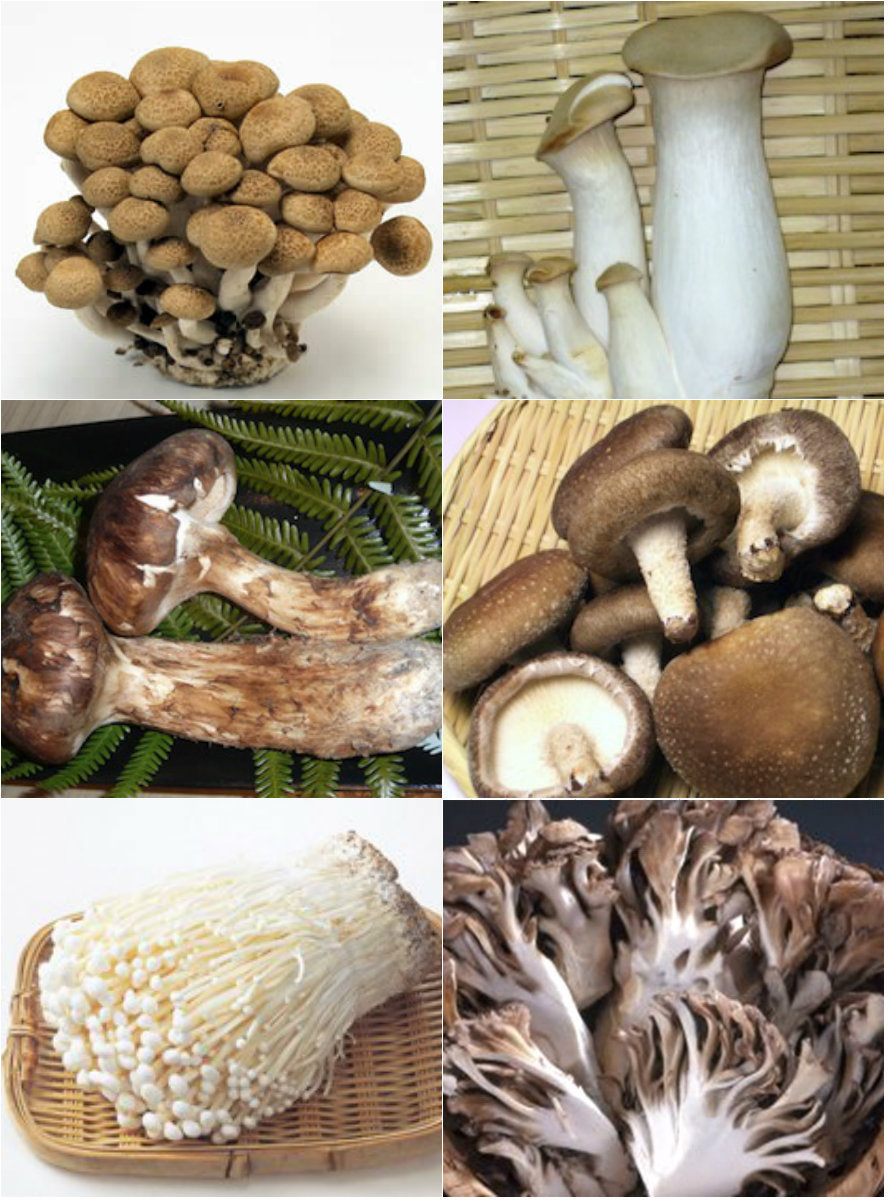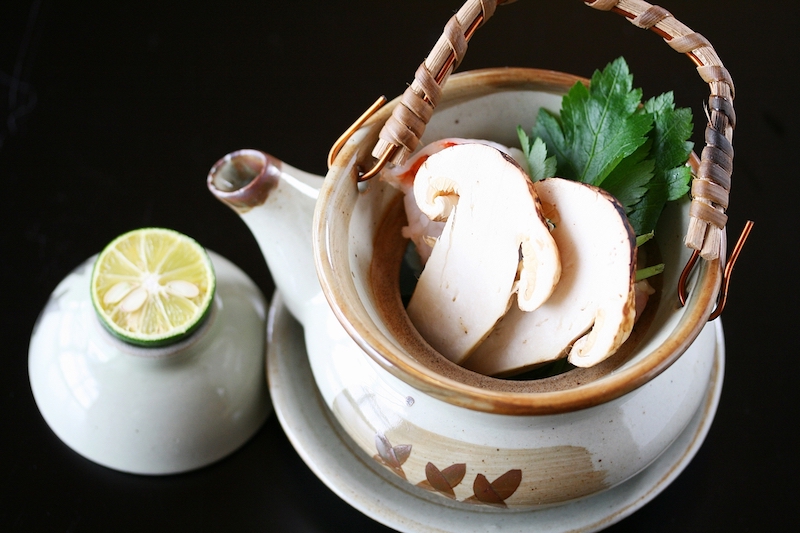
There are 4 parts to a dobin: the pot in which morsels of food are placed (these typically have a handle hooked into place), a saucer, a lid for the pot, and a small choko cup that sits perched on top. The flavorful broth produced during steam-poaching is drunk from this cup.
Named after the teapot-shaped vessel, dobin 土瓶 in which it is served, dobin mushi土瓶蒸しsteam-poaches morsels of food while trapping their aromatic vapors in the pot. The intensely flavored broth produced during cooking is poured into small sipping choko 猪口cups to be enjoyed with the morsels. The teapot-like vessels are sold at many Asian grocery stores, and are a charming addition to the table. But if you cannot find them (or the space to store them in your crowded cupboard) a similar effect can be had by using small, porcelain soufflé dishes and cooking parchment or clear plastic wrap.

various kinds of mushrooms
top row (left): pearly-gray shiméji, (right) trumpet-shaped éringi
middle row (left) pine-scented matsutaké, (right) black-capped shiitaké
bottom row (left) slender ivory-colored énoki, (right) maitaké
 Dobin Mushi enables autumnal mushrooms to take center stage. If you are able to source more than one variety you will be rewarded with deep, complex flavor and aroma.
Dobin Mushi enables autumnal mushrooms to take center stage. If you are able to source more than one variety you will be rewarded with deep, complex flavor and aroma.
A word of caution for those tempted to go foraging for mushrooms on their own… deep knowledge and long experience is essential. Wild mushrooms should be purchased from a reliable commercial source.
DOWNLOAD recipe for Dobin Mushi
DOWNLOAD recipe for a Dobin Mushi VEGAN version




